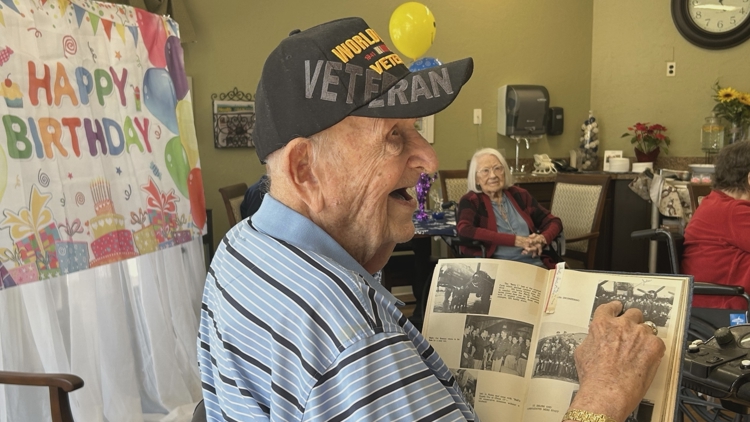jiliasia online casino
Protest dies, conflict survivesAlleged loss of lives during PTI protest: Constitutional bench declines to take suo motu notice KP AAG Shah Faisal requested bench to take suo motu notice of loss of lives during PTI protest march ISLAMABAD: The Constitutional bench on Wednesday declined to take suo motu notice of alleged loss of lives during the Pakistan Tehreek-e-Insaf (PTI) protest rally in Islamabad. A five-member Constitutional bench formed under the 26th Constitutional Amendment, headed by Justice Aminuddin Khan, heard a case related to establishment of an authority to deal with issues related to climate change. Other members of the bench included Justice Jamal Khan Mandokhail, Justice Muhammad Ali Mazhar, Justice Hassan Azhar Rizvi and Justice Musarat Hilali. During the course of hearing, KP Additional Advocate General Shah Faisal, while appearing before the bench through video link from Peshawar Registry, verbally requested the bench to take suo motu notice of loss of lives on both sides during the PTI protest march. Justice Musarat Hilali, however, asked the additional advocate general to refrain from issuing political statements before the bench. Similarly, Justice Aminuddin Khan observed that they could not address the matter which was not before them. Justice Mandokhail observed that they do not wish to comment on issues outside the court’s purview. The constitutional bench then rejected the verbal plea of KP’s additional advocate general. Meanwhile, the bench also disposed of a plea filed by founder PTI Imran Khan related to merger of Federally Administered Tribal Areas (Fata) into Khyber Pakhtunkhwa province. Babar Awan, counsel for the PTI founder chairman, submitted before the court that as the matter has already been finalised by the Khyber Pukhtunkhwa Assembly, hence no further judicial action was necessary on the petition.
Liverpool beat Real Madrid at Anfield to continue winning streak in Champions League - Liverpool FCPathstone Holdings LLC Sells 24,365 Shares of Baker Hughes (NASDAQ:BKR)
Oppenheimer & Co. Inc. Makes New $122,000 Investment in American Airlines Group Inc. (NASDAQ:AAL)NJIT defeats Morehead State 78-69
Aston Villa’s disallowed goal would have counted in England – Unai Emery
American troops of the 504th Regiment, 82nd Airborne Division, advance by way of a fire break in the woods as they make their way to Herresbach, Belgium, during the Battle of the Bulge. Mary Evans via ZUMA It was their first day in battle and the two best friends had just switched places. Bob Fordyce rested while Frank Hartzell crawled down into the shallow foxhole, taking his turn chipping away at the frozen ground. Just then, German artillery fire began falling all around them. With his body plastered to the ground, Hartzell could feel shrapnel dent his helmet. When the explosions finished, he picked himself up to find that his best friend had just been killed in the blur of combat. “When you’re actually in it, it’s very chaotic,” Hartzell said. The following day, New Year’s Day 1945, Hartzell battled Nazi soldiers for control of the Belgian town of Chenogne. In the aftermath, American soldiers gunned down dozens of unarmed German prisoners of war in a field—a clear violation of the Geneva Convention. “I remember we had been given orders, take no prisoners,” Hartzell said. “When I walked past the field on the left, there were these dead bodies. I knew what they were. I knew they were dead Germans.” News of the massacre reached General George S. Patton, but no investigation followed. This was an untold story that occurred during the epic Battle of the Bulge that began in December 1944 and continued for six weeks, an event that British Prime Minister Winston Churchill described as being “undoubtedly the greatest American battle of the war.” With 700,000 Allied forces involved, it was the largest battle fought by Americans, resulting in enormous numbers of casualties and marking the last offensive on the Western front. This week on Reveal , reporter Chris Harland-Dunaway investigates why the soldiers who committed the massacre at Chenogne were never held accountable. This is an update of an episode that originally aired in July 2018 .
AP Trending SummaryBrief at 5:10 p.m. ESTQueensland marks first paediatric robotic surgery in TownsvilleBlack Friday Deal: This Jackery Solar Generator Kit Is a Massive $3,200 OffBenralizumab is a monoclonal antibody that targets specific white blood cells, called eosinophils, to reduce lung inflammation. A new way of treating serious asthma and chronic obstructive pulmonary disease (COPD) attacks could be a “game-changer” and is the first leap in treatment for 50 years, researchers say. Offering patients an injection is more effective than the current care of steroid tablets and cuts the need for further treatment by 30%, according to a study. Benralizumab is a monoclonal antibody that targets specific white blood cells, called eosinophils, to reduce lung inflammation. It is currently used as a repeat treatment for severe asthma at a low dose, but a new clinical trial has found that a higher single dose can be very effective if injected at the time of a flare-up. The findings, published in the Lancet Respiratory Medicine, included 158 people who needed medical attention in A&E for their asthma or COPD attack (COPD is a group of lung conditions that cause breathing difficulties). Patients were given a quick blood test to see what type of attack they were having, with those suffering an “eosinophilic exacerbation” involving eosinophils (a type of white blood cell) being suitable for treatment. Around 50% of asthma attacks are eosinophilic exacerbations, as are 30% of COPD ones, according to the scientists. The clinical trial, led by King’s College London and carried out at Oxford University Hospitals NHS Foundation Trust and Guy’s and St Thomas’ NHS Foundation Trust, saw patients randomly split into three groups. One group received the benralizumab injection and dummy tablets, another received standard care (prednisolone steroids 30mg daily for five days) and a dummy injection, and the third group received both the benralizumab injection and steroids. After 28 days, respiratory symptoms of cough, wheeze, breathlessness and sputum were found to be better in people on benralizumab. And after 90 days, there were four times fewer people in the benralizumab group who failed treatment compared with those receiving steroids. Treatment with the benralizumab injection also took longer to fail, meaning fewer visits to a GP or hospital for patients, researchers said. Furthermore, people also reported a better quality of life on the new regime. Scientists at King’s said steroids can have severe side-effects such as increasing the risk of diabetes and osteoporosis, meaning switching to benralizumab could provide huge benefits. Lead investigator Professor Mona Bafadhel, from King’s, said: “This could be a game-changer for people with asthma and COPD. “Treatment for asthma and COPD exacerbations have not changed in 50 years, despite causing 3.8 million deaths worldwide a year combined. “Benralizumab is a safe and effective drug already used to manage severe asthma. “We’ve used the drug in a different way – at the point of an exacerbation – to show that it’s more effective than steroid tablets, which is the only treatment currently available.” Researchers said benralizumab could also potentially be administered safely at home or in a GP practice, as well as in A&E. First author Dr Sanjay Ramakrishnan, clinical senior lecturer at the University of Western Australia, said: “Our study shows massive promise for asthma and COPD treatment. “COPD is the third leading cause of death worldwide but treatment for the condition is stuck in the 20th century. “We need to provide these patients with life-saving options before their time runs out.” Dr Samantha Walker, director of research and innovation at Asthma and Lung UK, welcomed the findings but said: “It’s appalling that this is the first new treatment for those suffering from asthma and COPD attacks in 50 years, indicating how desperately underfunded lung health research is.” AstraZeneca provided the drug for the study and funded the research, but had no input into trial design, delivery, analysis or interpretation.
- Previous: 33 jili
- Next: jilimacao com login




